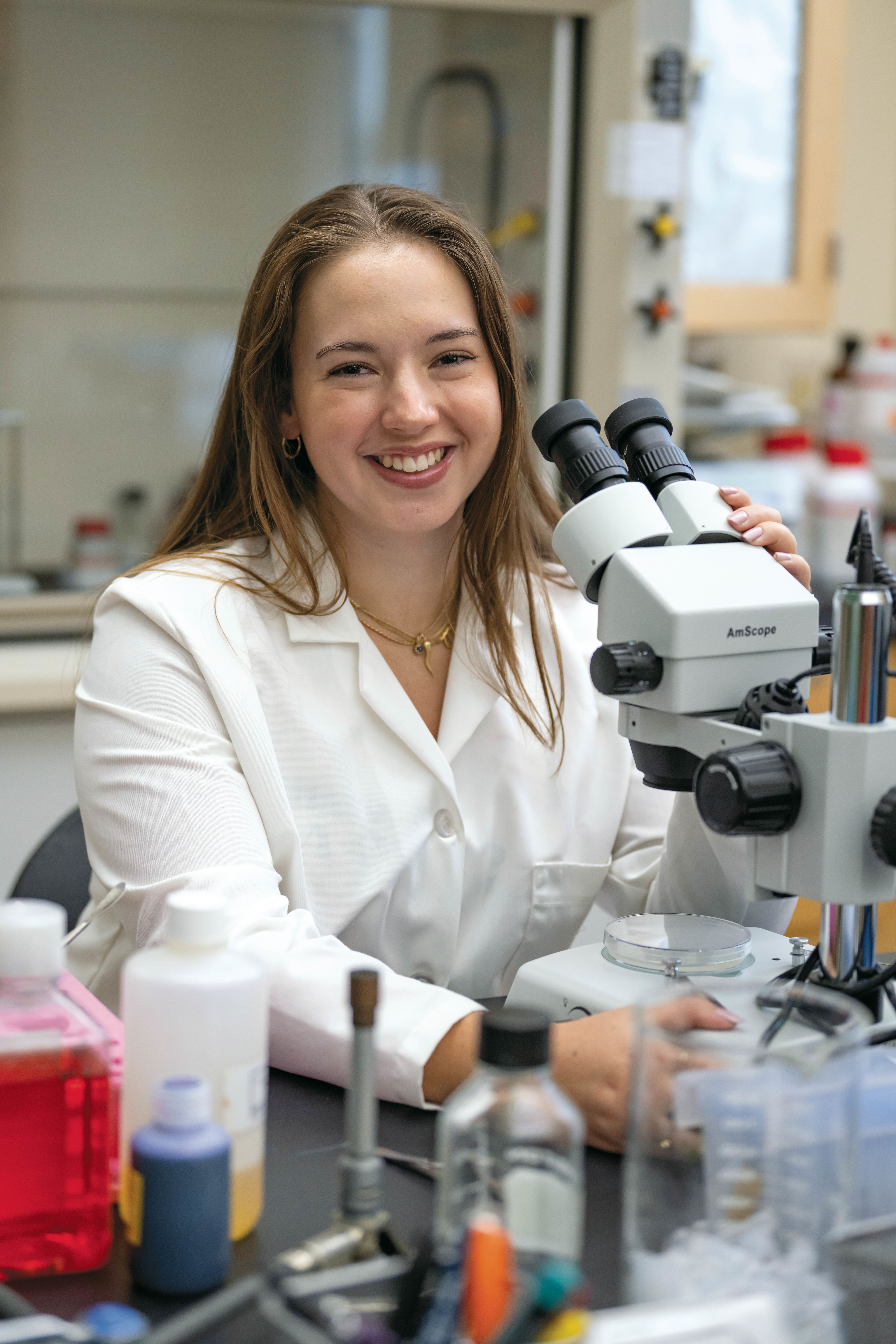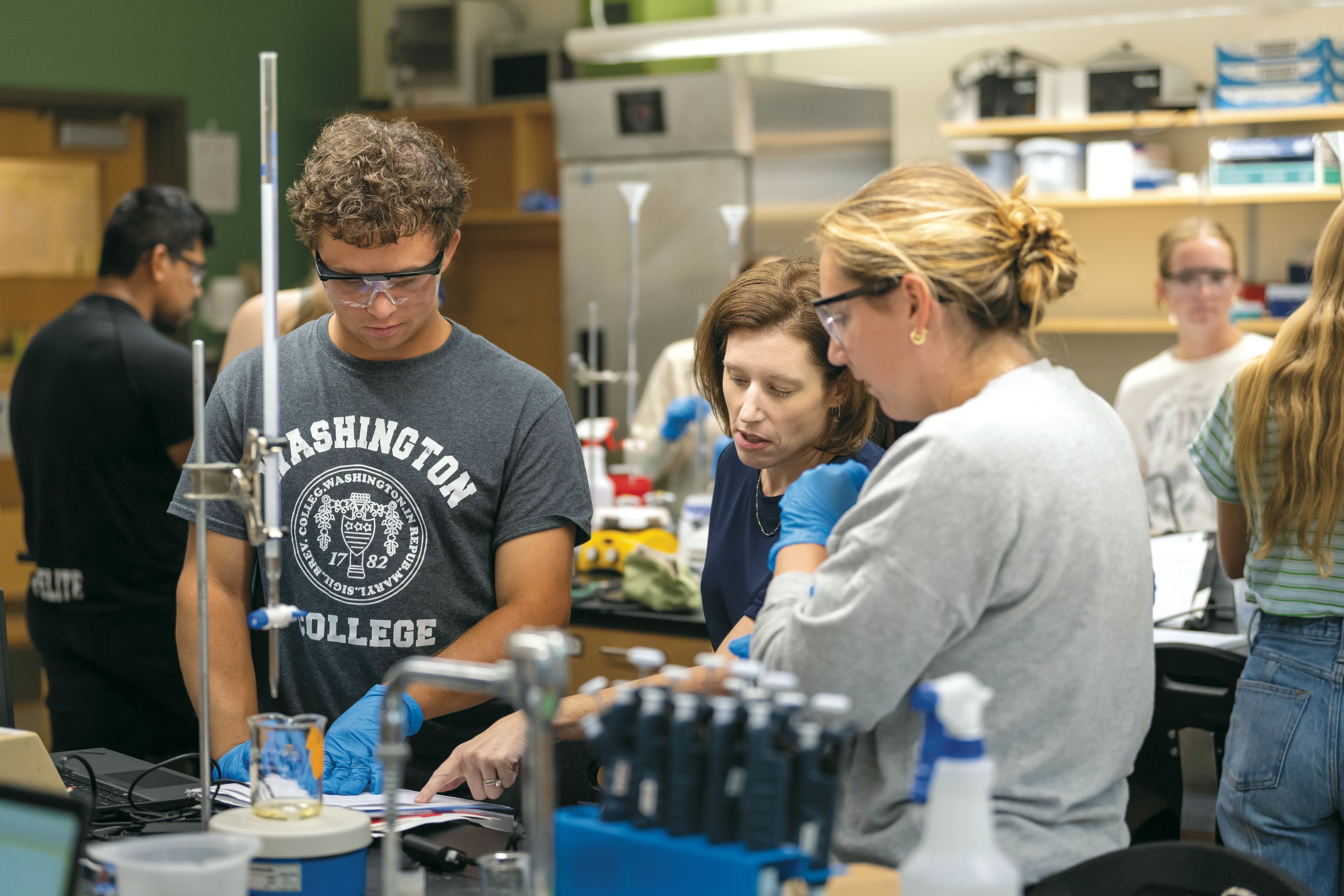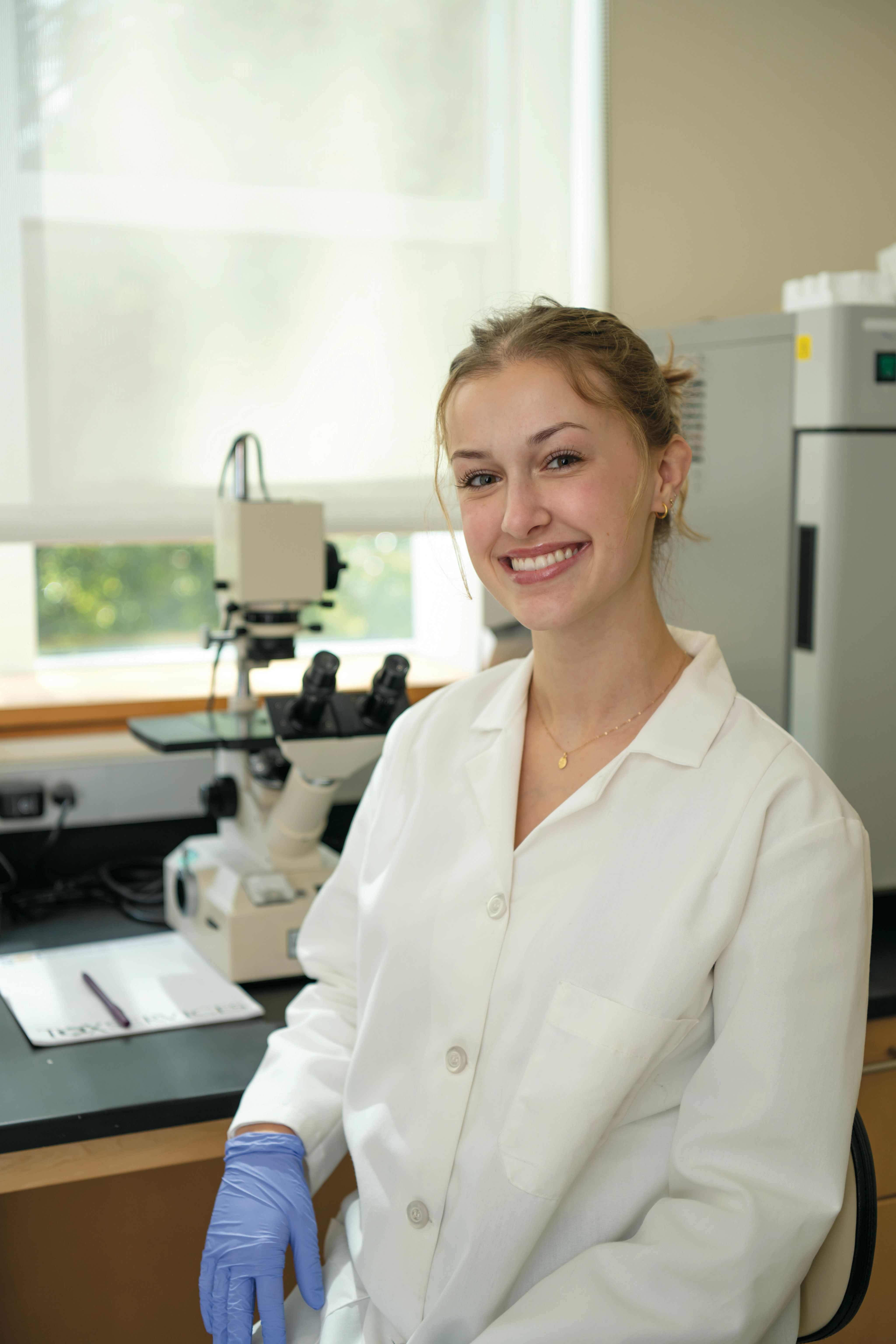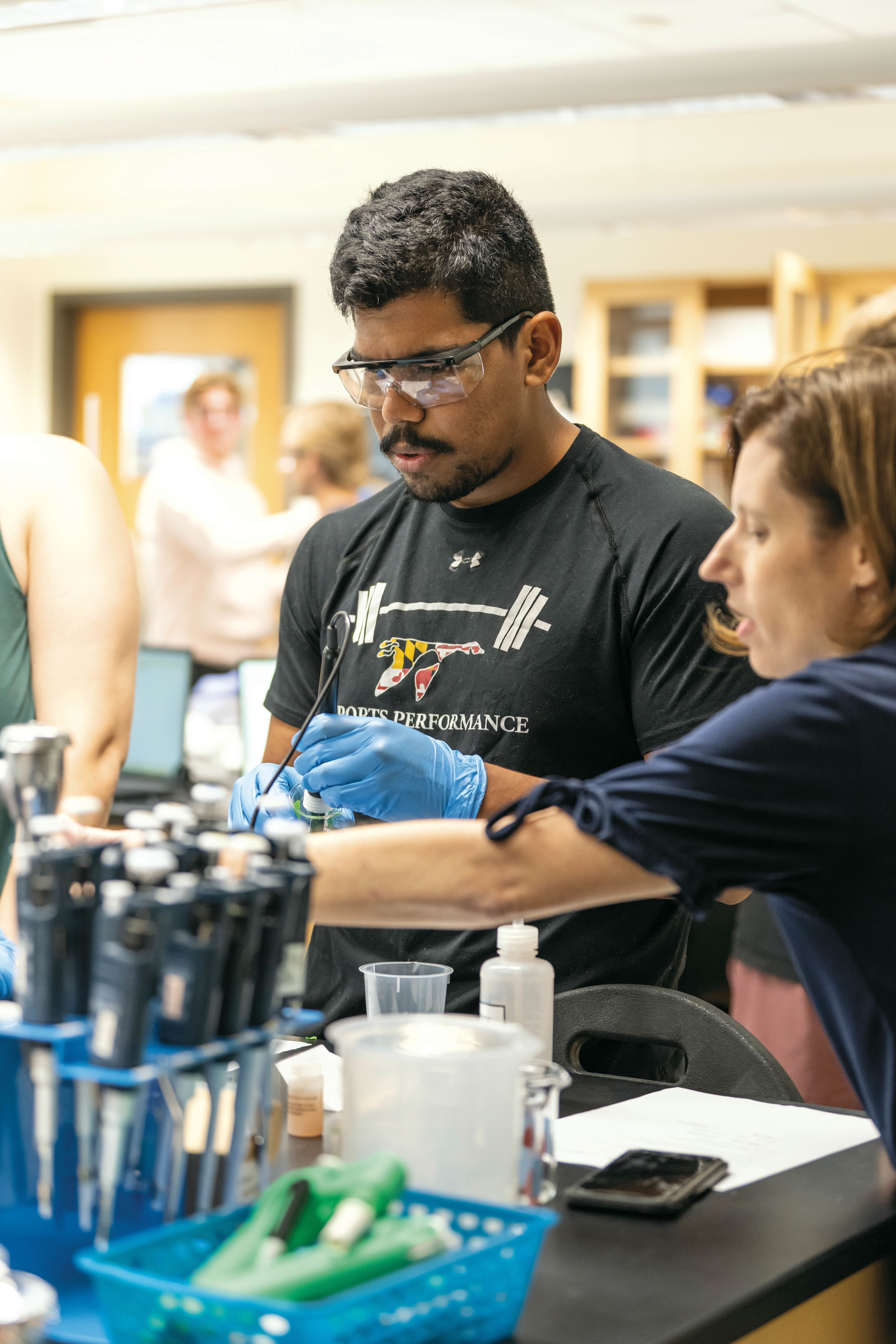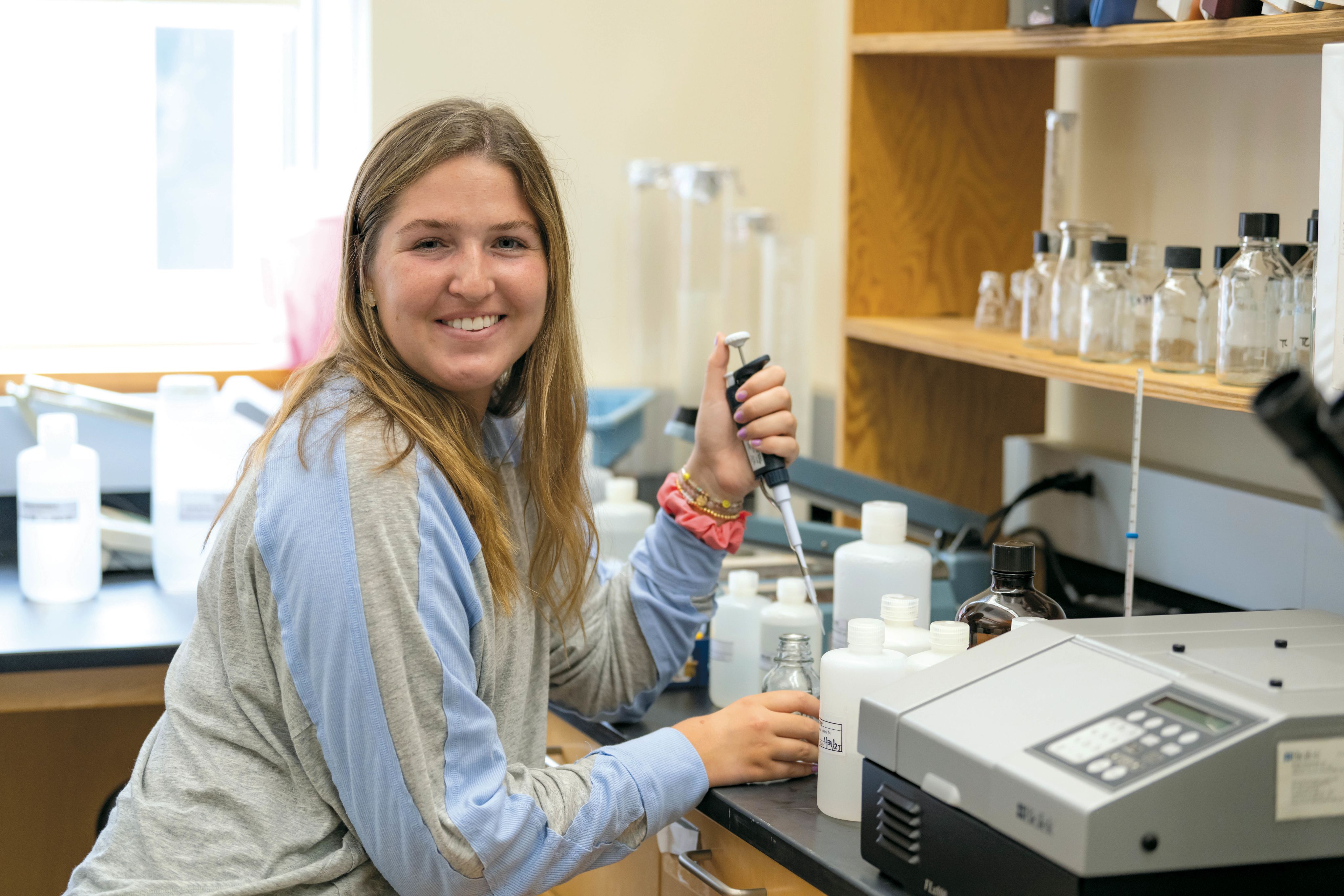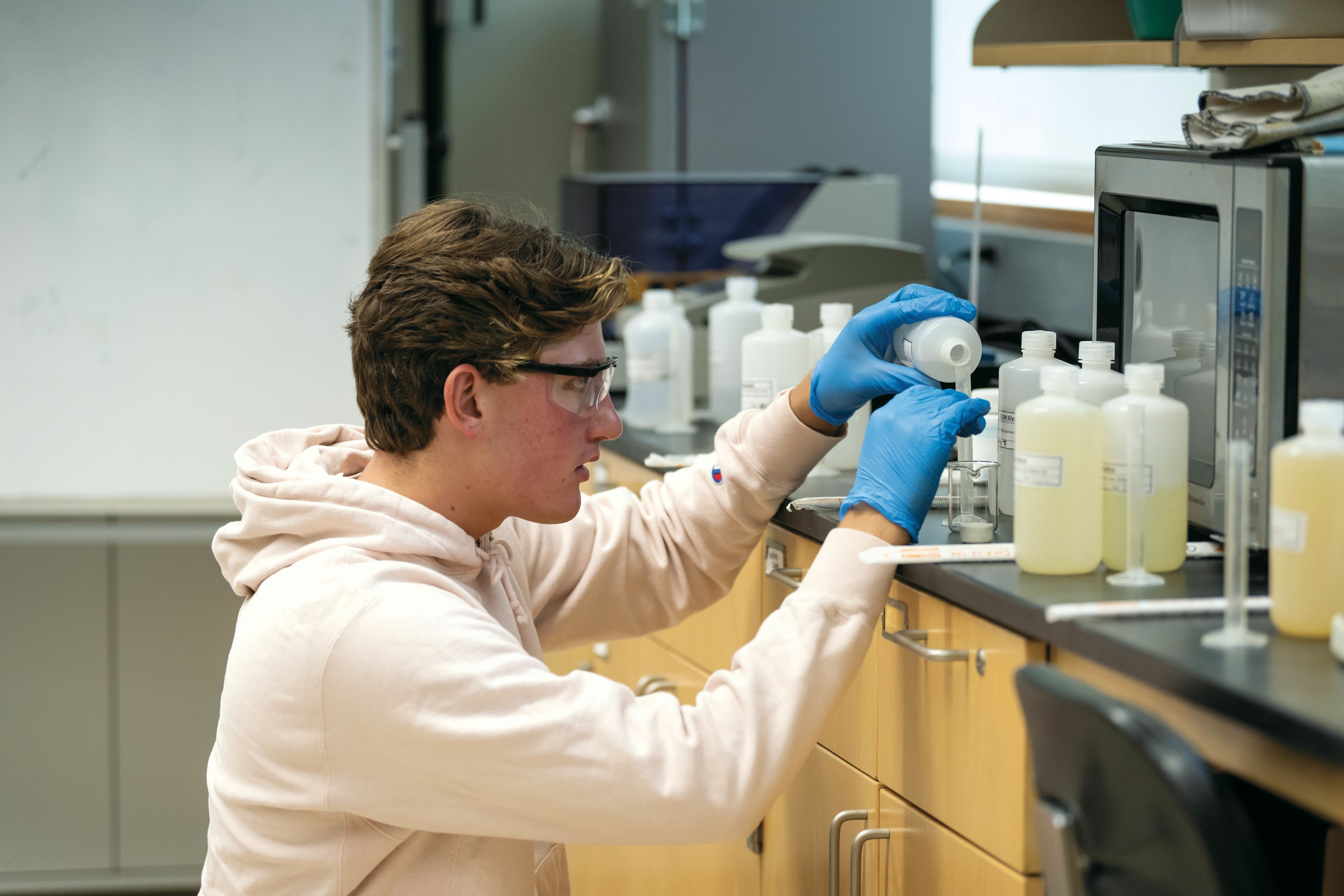Arsenic & Phthalate
Professor Mindy Reynolds encourages her students to do original research on toxic substances in everyday products.
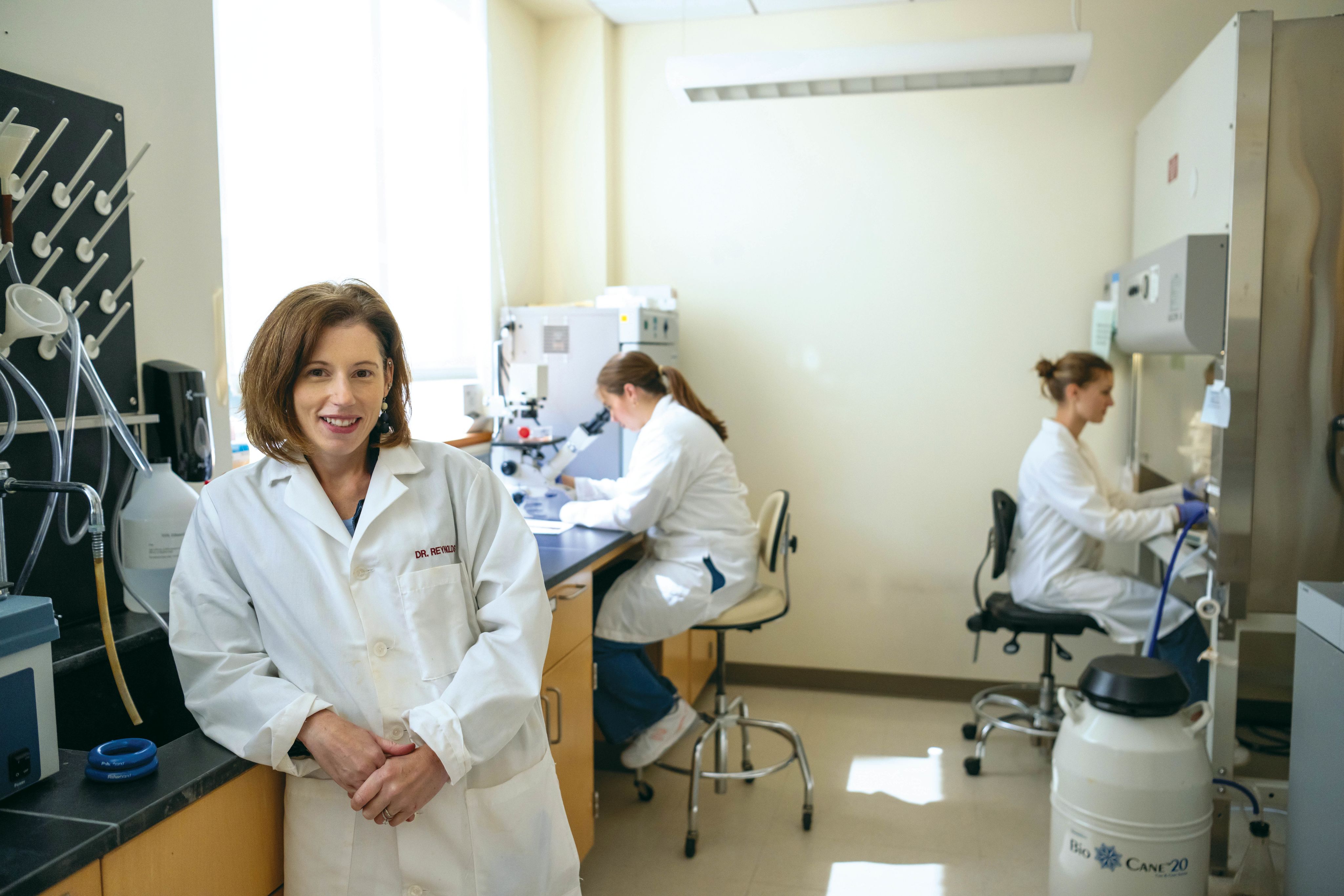
Emily Kopp ’25
Emily Kopp ’25
“Every single thing in our world is poisonous, everything,” Mindy Reynolds, the co-chair of the biochemistry and molecular biology program, said. “I mean, water is poisonous.”
Disconcerting as that sounds, Reynolds, who specializes in toxicology (the study of poisons), grinned and added, “But it’s the dose that makes something poisonous.” In other words, whether it’s arsenic or water, the size of the dose determines its toxicity. The dose of arsenic you get from eating like rice, cereal, and seafood is unlikely to hurt you.
Reynolds has been teaching at Washington since 2008, after earning a doctorate at Brown University. She hadn’t imagined a career in education until she caught the teaching bug in graduate school. Having decided to teach, Reynolds looked for a small liberal arts college like the one she attended as an undergrad (Wheaton College in Norton, Massachusetts).
“I wanted to be at a place similar to where I went, where I knew I could connect with students and would have time to really do research with them,” she explained. “That’s why I came to Washington College, and I love it.”
“She’s well known in the student population for being a very good teacher,” said Emily Kopp ’25, who’s taken toxicology and biochemistry classes with Reynolds.
Perhaps the most unique aspect of Reynolds’ classes is that her students do what she refers to as authentic or original research. In other words, instead of replicating experiments that scientists have already done—which is standard in most laboratory classes at the undergraduate level—her students do novel experiments that may lead to new discoveries
Emily Kopp ’25
Emily Kopp ’25
“Every single thing in our world is poisonous, everything,” Mindy Reynolds, the co-chair of the biochemistry and molecular biology program, said. “I mean, water is poisonous.”
Disconcerting as that sounds, Reynolds, who specializes in toxicology (the study of poisons), grinned and added, “But it’s the dose that makes something poisonous.” In other words, whether it’s arsenic or water, the size of the dose determines its toxicity. The dose of arsenic you get from eating like rice, cereal, and seafood is unlikely to hurt you.
Reynolds has been teaching at Washington since 2008, after earning a doctorate at Brown University. She hadn’t imagined a career in education until she caught the teaching bug in graduate school. Having decided to teach, Reynolds looked for a small liberal arts college like the one she attended as an undergrad (Wheaton College in Norton, Massachusetts).
“I wanted to be at a place similar to where I went, where I knew I could connect with students and would have time to really do research with them,” she explained. “That’s why I came to Washington College, and I love it.”
“She’s well known in the student population for being a very good teacher,” said Emily Kopp ’25, who’s taken toxicology and biochemistry classes with Reynolds.
Perhaps the most unique aspect of Reynolds’ classes is that her students do what she refers to as authentic or original research. In other words, instead of replicating experiments that scientists have already done—which is standard in most laboratory classes at the undergraduate level—her students do novel experiments that may lead to new discoveries
Reynolds with David (Kohl) Perkins ’26 and Gabby Drusano ’25
Reynolds with David (Kohl) Perkins ’26 and Gabby Drusano ’25
Asked if that means she doesn’t know the results of the experiments her students are doing, Reynolds said, “Spot on.” Of course, she and the students have hypotheses the experiments will prove or disprove; the point is they are entering the unknown together.
And to say such authentic research is unusual is putting it mildly.
“I had an internship this summer,”
Kopp shared, “and someone there said, ‘I’ve never heard of undergraduate students working with c-elegans and zebrafish and planaria.’ So, it was cool to realize the opportunities that Dr. Reynolds had given us.”
Kopp’s class exposed zebrafish embryos to caffeine, then watched the embryos under microscopes, comparing the development between those treated with caffeine and a control group without. The students took pictures to highlight how things like gill or spine development varied between the groups.
“We did conclude that exposure to caffeine increased the observed seizures and odd movements over a period of time when compared to the control,” Kopp said. While Kopp didn’t immediately stop drinking coffee, she does do so in moderation.
“I try to keep my caffeine intake below the suggested upper limit of 400/mg a day, and the average cup of coffee is only 95 mg. But based on my research with zebrafish, although I don’t know the full effects of caffeine exposure on a body or nervous system, I don’t want to test those suggested limits myself.”
Reynolds with David (Kohl) Perkins ’26 and Gabby Drusano ’25
Reynolds with David (Kohl) Perkins ’26 and Gabby Drusano ’25
Asked if that means she doesn’t know the results of the experiments her students are doing, Reynolds said, “Spot on.” Of course, she and the students have hypotheses the experiments will prove or disprove; the point is they are entering the unknown together.
And to say such authentic research is unusual is putting it mildly.
“I had an internship this summer,”
Kopp shared, “and someone there said, ‘I’ve never heard of undergraduate students working with c-elegans and zebrafish and planaria.’ So, it was cool to realize the opportunities that Dr. Reynolds had given us.”
Kopp’s class exposed zebrafish embryos to caffeine, then watched the embryos under microscopes, comparing the development between those treated with caffeine and a control group without. The students took pictures to highlight how things like gill or spine development varied between the groups.
“We did conclude that exposure to caffeine increased the observed seizures and odd movements over a period of time when compared to the control,” Kopp said. While Kopp didn’t immediately stop drinking coffee, she does do so in moderation.
“I try to keep my caffeine intake below the suggested upper limit of 400/mg a day, and the average cup of coffee is only 95 mg. But based on my research with zebrafish, although I don’t know the full effects of caffeine exposure on a body or nervous system, I don’t want to test those suggested limits myself.”
Claire Cammer ’26, a biochemistry and microbiology major, studied what has become the most popular topic in Reynolds’ labs: vaping. Different student groups exposed live cells to various vaping fluids, including different flavors, nicotine levels, and active ingredients.
“We looked at how vaping fluids affect microtubule structures in human lung cells,” Cammer said.
Her group added vaping fluids of various concentrations and types to those cells and studied them under an immunofluorescent microscope to see if any differences resulted.
“We definitely learned vaping changes cellular structure a lot, especially in the human cells we studied. And, as we moved up into higher concentrations of the liquid, the microtubule structures deteriorated considerably. Overall, we learned vaping is just not good for your body, and while I’ve never vaped, our research really enforced that I don’t want to based on how it can change cells.”
If the results of the vaping experiments proved edifying to the students in Cammer’s class, they also educated the teacher.
“Studying some of the processes, we narrowed it down to one particular type [of vape fluid] that’s more toxic than others, and that’s cinnamon-flavored,” said Reynolds, whose own research focuses on how chronic exposure to metals, such as nickel, cobalt, and cadmium, may increase cancer rates. “I didn’t expect that, so that’s very interesting.”
Claire Cammer ’26
Claire Cammer ’26
Claire Cammer ’26
Claire Cammer ’26
Claire Cammer ’26, a biochemistry and microbiology major, studied what has become the most popular topic in Reynolds’ labs: vaping. Different student groups exposed live cells to various vaping fluids, including different flavors, nicotine levels, and active ingredients.
“We looked at how vaping fluids affect microtubule structures in human lung cells,” Cammer said.
Her group added vaping fluids of various concentrations and types to those cells and studied them under an immunofluorescent microscope to see if any differences resulted.
“We definitely learned vaping changes cellular structure a lot, especially in the human cells we studied. And, as we moved up into higher concentrations of the liquid, the microtubule structures deteriorated considerably. Overall, we learned vaping is just not good for your body, and while I’ve never vaped, our research really enforced that I don’t want to based on how it can change cells.”
If the results of the vaping experiments proved edifying to the students in Cammer’s class, they also educated the teacher.
“Studying some of the processes, we narrowed it down to one particular type [of vape fluid] that’s more toxic than others, and that’s cinnamon-flavored,” said Reynolds, whose own research focuses on how chronic exposure to metals, such as nickel, cobalt, and cadmium, may increase cancer rates. “I didn’t expect that, so that’s very interesting.”
Andrey Perez ’25 with Reynolds
Andrey Perez ’25 with Reynolds
Reynold’s approach to teaching through original research has been getting noticed. Recently, she and a team of original research proponents were awarded a grant from the National Science Foundation to take their methods national. The project will develop original research kits to be distributed to colleges around the country (see sidebar).
Before she turns her students loose in the lab, Reynolds instructs them on scientific protocols such as how to do human cell culture, maintaining a sterile work environment, and analyzing data. Only then can the students break out the lab coats and Petri dishes.
Before they begin, Reynolds gives the students choices as to what they want to experiment on and what questions they want to answer. For example, they might choose between experiments on metals or vaping fluids. Within each subject, she will give them a choice of three research questions to focus on. Reynolds believes that this makes the students more invested in the work, and the students agree.
“The work is more student-guided, where you can plan your own experiments and what you want to test,” Cammer said. “Basically Professor Reynolds is hands-off, not controlling us but guiding us.”
And that independence, Kopp agreed, leads to more robust learning. “Doing authentic research means we’re not just learning information to regurgitate back for an exam. We’re learning things that help us come out better citizens of Earth.”
As Reynolds puts it, she wants them to gain knowledge that is not only useful in the classroom but also has real-world applications.
“I want all students to come out of class knowing more about the world,” she said. “Like when you go in the store, there might be 10 different laundry detergents; how do you know which one’s safest? I want to help the students make choices like that.”
So, what have Reynolds’ students discovered about the world? A lot.
Andrey Perez ’25 with Reynolds
Andrey Perez ’25 with Reynolds
Reynold’s approach to teaching through original research has been getting noticed. Recently, she and a team of original research proponents were awarded a grant from the National Science Foundation to take their methods national. The project will develop original research kits to be distributed to colleges around the country (see sidebar).
Before she turns her students loose in the lab, Reynolds instructs them on scientific protocols such as how to do human cell culture, maintaining a sterile work environment, and analyzing data. Only then can the students break out the lab coats and Petri dishes.
Before they begin, Reynolds gives the students choices as to what they want to experiment on and what questions they want to answer. For example, they might choose between experiments on metals or vaping fluids. Within each subject, she will give them a choice of three research questions to focus on. Reynolds believes that this makes the students more invested in the work, and the students agree.
“The work is more student-guided, where you can plan your own experiments and what you want to test,” Cammer said. “Basically Professor Reynolds is hands-off, not controlling us but guiding us.”
And that independence, Kopp agreed, leads to more robust learning. “Doing authentic research means we’re not just learning information to regurgitate back for an exam. We’re learning things that help us come out better citizens of Earth.”
As Reynolds puts it, she wants them to gain knowledge that is not only useful in the classroom but also has real-world applications.
“I want all students to come out of class knowing more about the world,” she said. “Like when you go in the store, there might be 10 different laundry detergents; how do you know which one’s safest? I want to help the students make choices like that.”
So, what have Reynolds’ students discovered about the world? A lot.
“Learning about how harmful certain substances are has given me a new realization that I should be more aware of the products I use and ingest,” said Cate Manos ’25, a biology major on the pre-nursing track. “A classmate presented a research project about how certain haircare products may include many toxic substances. One of the products they discussed was one I used regularly,
so I stopped.”
For Kopp, it was about what she was putting on her fingernails. “People might not think of it as being dangerous, but if you use too much UV gel nail polish over time, you can increase your chances of suffering health problems, like getting skin cancer. So I used to use UV gels but don’t anymore.”
The student research hasn’t just uncovered toxic substances in everyday products. They have occasionally found products they considered dangerous were not as toxic as they thought. Kopp never drank Diet Coke before taking a class with Reynolds, for example, but after it was over, she saw she had the green light to do so.
“I didn’t really start drinking Diet Coke until after toxicology because after that class, I knew it wasn’t going to be some immense danger for my health.”
Still, there are plenty of toxic dangers in the real world, Reynolds admitted. She cited phthalates and bisphenol A (BPA)—chemicals prevalent in many plastics—as particular dangers and worth avoiding when possible.
“I do try to buy phthalate- and BPA-free products,” Reynolds said. She says simply reading labels is the best way to steer clear of both, which is wise given that phthalates can disrupt the endocrine system and impair physiological function in humans. At the same time, BPA may negatively affect the brain and prostate gland of fetuses and is linked to high blood pressure, diabetes, and heart disease. “I worry about pesticides, too. I’m definitely washing all my fruits and vegetables well, even the organic ones, because that doesn’t mean nothing was ever put on them.”
Cate Manos ’25
Cate Manos ’25
Cate Manos ’25
Cate Manos ’25
“Learning about how harmful certain substances are has given me a new realization that I should be more aware of the products I use and ingest,” said Cate Manos ’25, a biology major on the pre-nursing track. “A classmate presented a research project about how certain haircare products may include many toxic substances. One of the products they discussed was one I used regularly,
so I stopped.”
For Kopp, it was about what she was putting on her fingernails. “People might not think of it as being dangerous, but if you use too much UV gel nail polish over time, you can increase your chances of suffering health problems, like getting skin cancer. So I used to use UV gels but don’t anymore.”
The student research hasn’t just uncovered toxic substances in everyday products. They have occasionally found products they considered dangerous were not as toxic as they thought. Kopp never drank Diet Coke before taking a class with Reynolds, for example, but after it was over, she saw she had the green light to do so.
“I didn’t really start drinking Diet Coke until after toxicology because after that class, I knew it wasn’t going to be some immense danger for my health.”
Still, there are plenty of toxic dangers in the real world, Reynolds admitted. She cited phthalates and bisphenol A (BPA)—chemicals prevalent in many plastics—as particular dangers and worth avoiding when possible.
“I do try to buy phthalate- and BPA-free products,” Reynolds said. She says simply reading labels is the best way to steer clear of both, which is wise given that phthalates can disrupt the endocrine system and impair physiological function in humans. At the same time, BPA may negatively affect the brain and prostate gland of fetuses and is linked to high blood pressure, diabetes, and heart disease. “I worry about pesticides, too. I’m definitely washing all my fruits and vegetables well, even the organic ones, because that doesn’t mean nothing was ever put on them.”
Reynolds said she was particularly concerned about microplastics in the environment. They’re being seen in the testicles of young men and the placentas of babies now, and clams and oysters are even being found filled with fiberglass. Worse, the effects of microplastics in the world might not really be known for another 10 or 15 years.
“Microplastics are everywhere, and it is really, really scary,” Reynolds said. “There’s no way for us to escape microplastics. People are trying to reduce or get rid of plastics, but we may be already too far gone.”
For all the unnerving knowledge she shares, though, Reynolds is not pessimistic about the future. She tells her students they “can’t live in a bubble” and should use the intelligence they are accruing to make good choices.
“For me, it’s just being more aware of your surroundings. There’s not one thing you can do to escape all toxic dangers in real life, but you can be more aware of your surroundings, pay attention in the grocery store, read more labels, and things like that.”
Reynolds reminds her students that while toxic substances are all around, their danger is all about the dosage.
“Dr. Reynolds would always emphasize that it’s the dosage that determines the toxicity,” Manos said. “Using a product containing toxic substances once in a while will not kill you, but using a high dosage of a product with toxic substances is something to be more aware of.”
Connor Kravitz-Yoffee ’26
Connor Kravitz-Yoffee ’26
Connor Kravitz-Yoffee ’26
Connor Kravitz-Yoffee ’26
Reynolds said she was particularly concerned about microplastics in the environment. They’re being seen in the testicles of young men and the placentas of babies now, and clams and oysters are even being found filled with fiberglass. Worse, the effects of microplastics in the world might not really be known for another 10 or 15 years.
“Microplastics are everywhere, and it is really, really scary,” Reynolds said. “There’s no way for us to escape microplastics. People are trying to reduce or get rid of plastics, but we may be already too far gone.”
For all the unnerving knowledge she shares, though, Reynolds is not pessimistic about the future. She tells her students they “can’t live in a bubble” and should use the intelligence they are accruing to make good choices.
“For me, it’s just being more aware of your surroundings. There’s not one thing you can do to escape all toxic dangers in real life, but you can be more aware of your surroundings, pay attention in the grocery store, read more labels, and things like that.”
Reynolds reminds her students that while toxic substances are all around, their danger is all about the dosage.
“Dr. Reynolds would always emphasize that it’s the dosage that determines the toxicity,” Manos said. “Using a product containing toxic substances once in a while will not kill you, but using a high dosage of a product with toxic substances is something to be more aware of.”
Poisons Through the Ages
“Arsenic was the number one homicidic agent used by wives!” Professor Mindy Reynolds said with a disconcerting smile. “Arsenic is the oldest poison and was used many times throughout history to poison kings.”
Arsenic wasn’t just used to kill husbands and kings, but relatives and political rivals of every ilk. In fact, a nickname for arsenic was the “inheritance tax” because impatient children frequently used it to off their parents to get their hands on the family loot more quickly.
Toxins (natural) and toxicants (man-made) have been used throughout history to kill.
- The Spanish explorer Juan Ponce de Leön was fatally poisoned in Florida after being hit in the thigh with an arrow infected with lethal sap from a manchineel tree.
- The German composer Johann Schobert was a musical genius but not a great mycologist. He died in 1767 after eating poison mushrooms that he insisted were edible.
- In 1959, Ukrainian militant nationalist Stepan Bandera was slain when a KGB agent shot cyanide gas into his face with an air pistol.
- Silent film actress Olive Thomas died in Paris in 1920 after accidentally ingesting a fatal dose of mercury bichloride, which her husband was using as a syphilis treatment.
- In 17th century Italy a woman named Giulia Tofana invented a “perfume” called Aqua Tofana, a bottle of arsenic-laced liquid married women could hide in plain sight in the boudoir before using it to dispose of deadbeat husbands. It’s believed as many as 600 people were killed with Aqua Tofana before its creator was arrested and executed.
- When Russian defector Alexander Litvinenko drank a cup of green tea laced with radioactive polonium, his days were numbered: Three weeks later, he was dead.
- Jeannette Loff was an American actress, musician, and singer in the first half of the 20th century who ingested medication to treat an upset stomach in 1942. Unfortunately, she grabbed the wrong bottle and died after drinking ammonia.
- Even experts can’t escape the fatal effects of poisons. Dartmouth College professor Karen Wetterhahn, who specialized in toxic metal exposure, died when a mercury compound leaked through insufficiently protective lab gloves and onto her skin.
